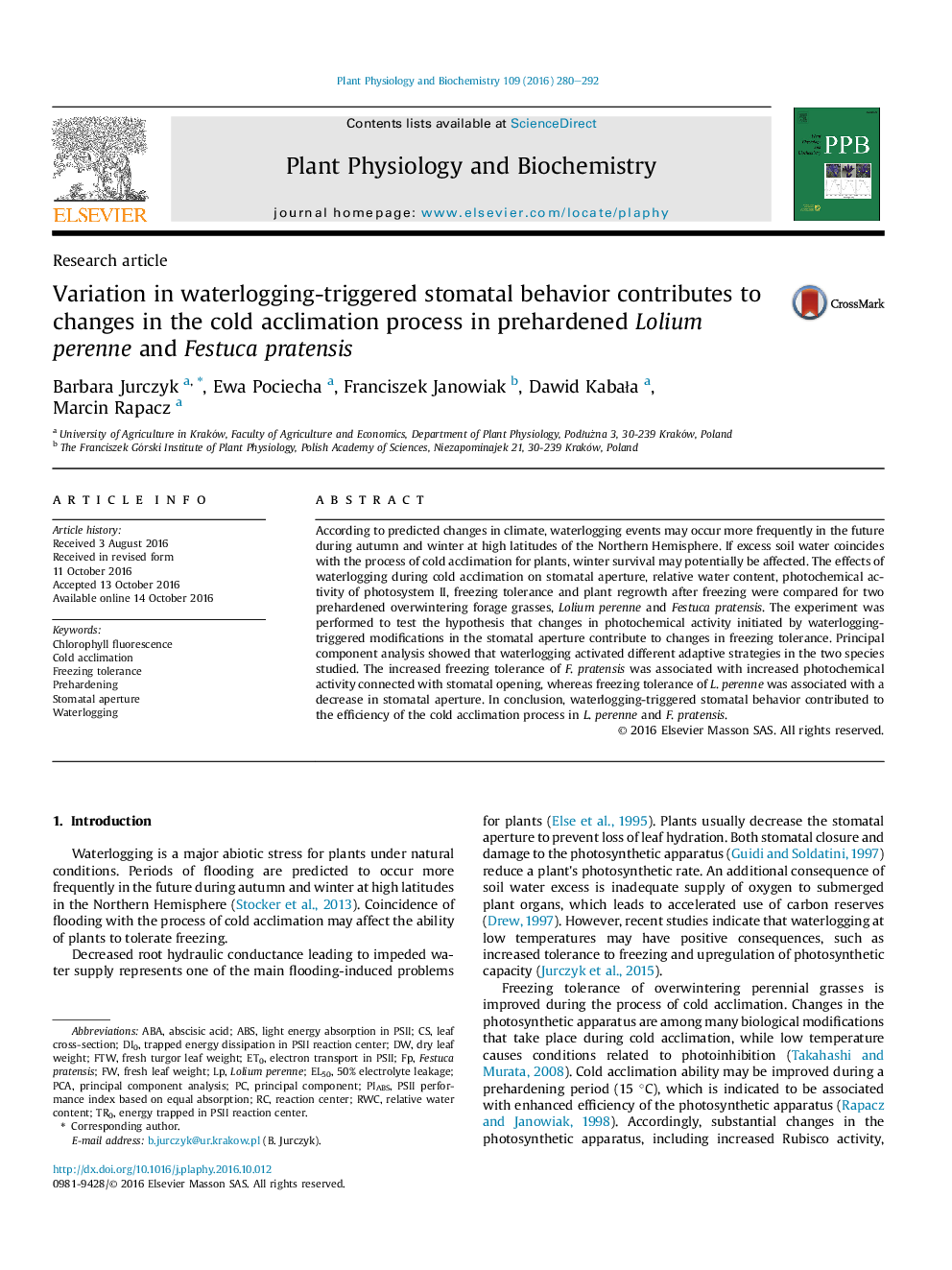| Article ID | Journal | Published Year | Pages | File Type |
|---|---|---|---|---|
| 5515645 | Plant Physiology and Biochemistry | 2016 | 13 Pages |
â¢The effect of excess soil water was examined for two forage grasses.â¢Cold acclimation of prehardened Lolium perenne and Festuca pratensis was analyzed.â¢Festuca pratensis enhanced photochemical activity due to stomatal opening under waterlogging.â¢Stomatal opening in F. pratensis was related to improved freezing tolerance.â¢Increased freezing tolerance in L. perenne was related to decreased stomatal aperture.
According to predicted changes in climate, waterlogging events may occur more frequently in the future during autumn and winter at high latitudes of the Northern Hemisphere. If excess soil water coincides with the process of cold acclimation for plants, winter survival may potentially be affected. The effects of waterlogging during cold acclimation on stomatal aperture, relative water content, photochemical activity of photosystem II, freezing tolerance and plant regrowth after freezing were compared for two prehardened overwintering forage grasses, Lolium perenne and Festuca pratensis. The experiment was performed to test the hypothesis that changes in photochemical activity initiated by waterlogging-triggered modifications in the stomatal aperture contribute to changes in freezing tolerance. Principal component analysis showed that waterlogging activated different adaptive strategies in the two species studied. The increased freezing tolerance of F. pratensis was associated with increased photochemical activity connected with stomatal opening, whereas freezing tolerance of L. perenne was associated with a decrease in stomatal aperture. In conclusion, waterlogging-triggered stomatal behavior contributed to the efficiency of the cold acclimation process in L. perenne and F. pratensis.
